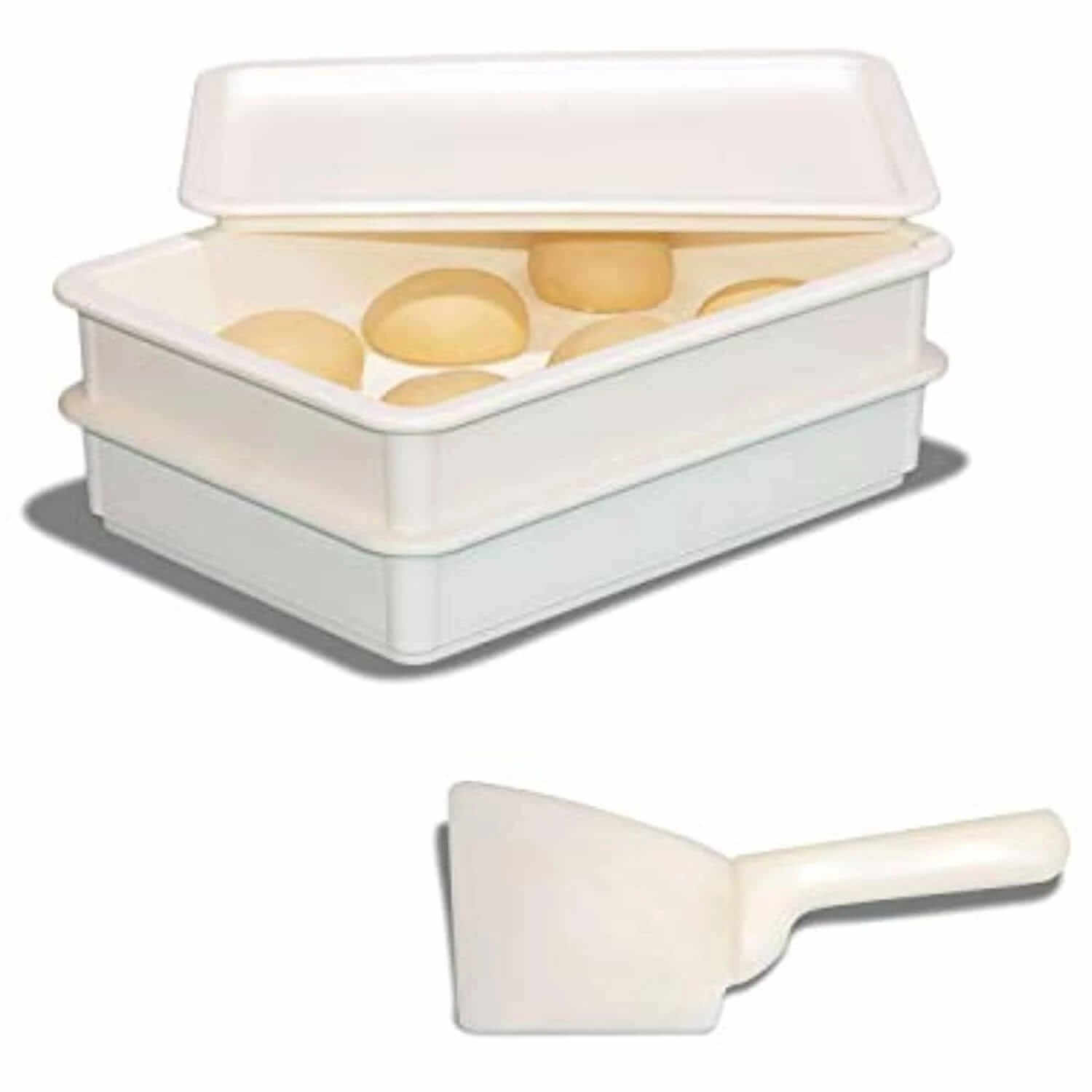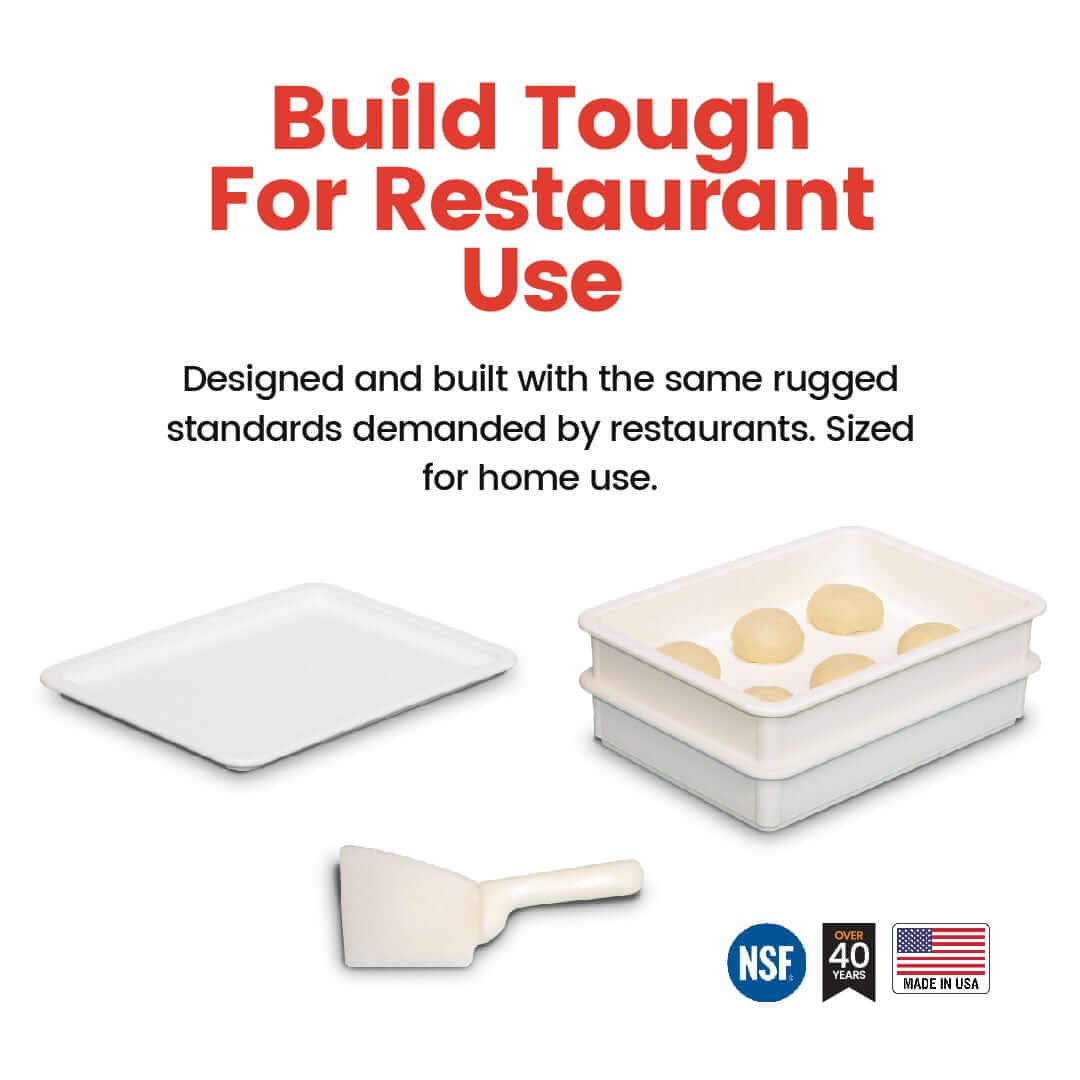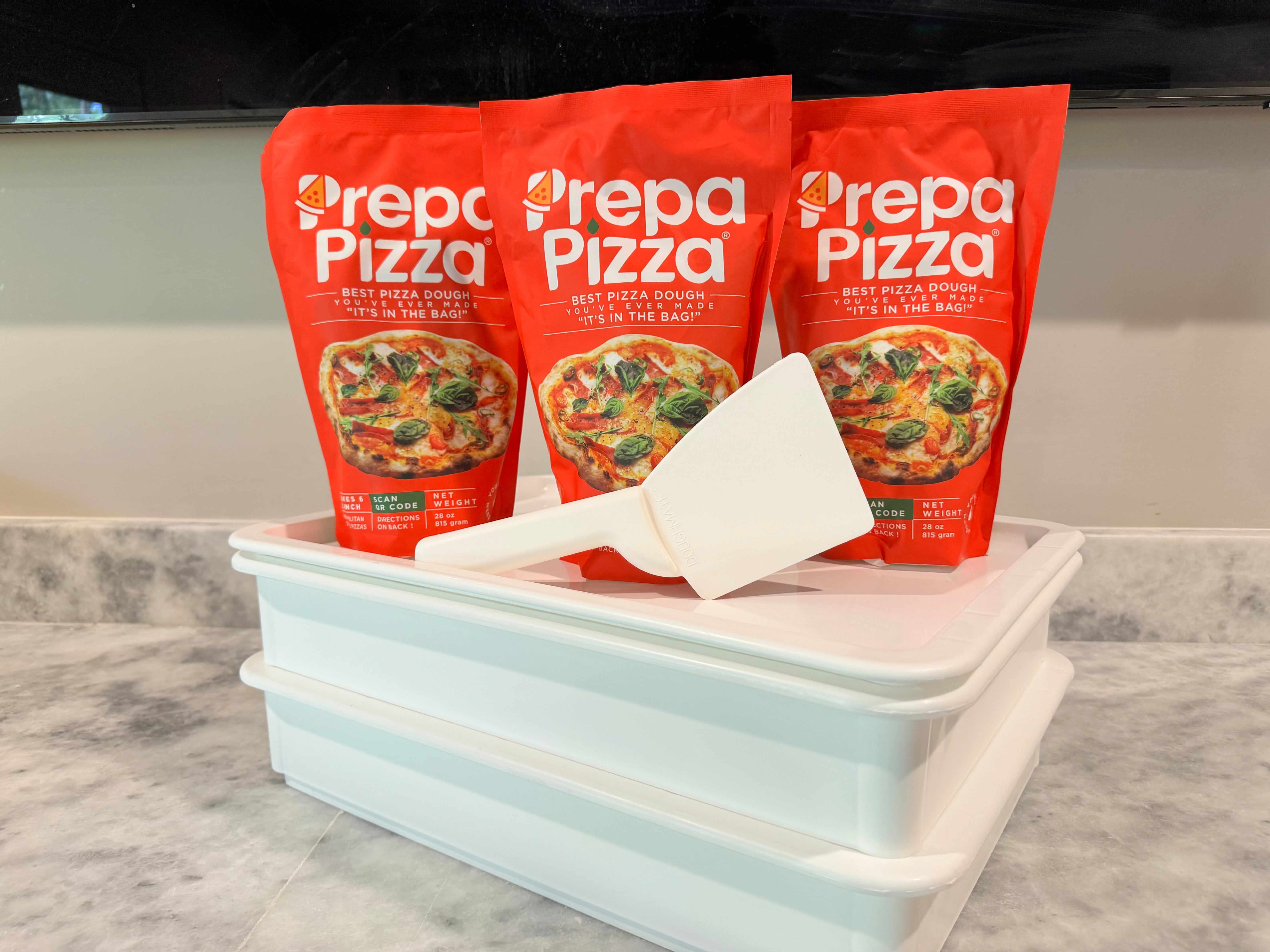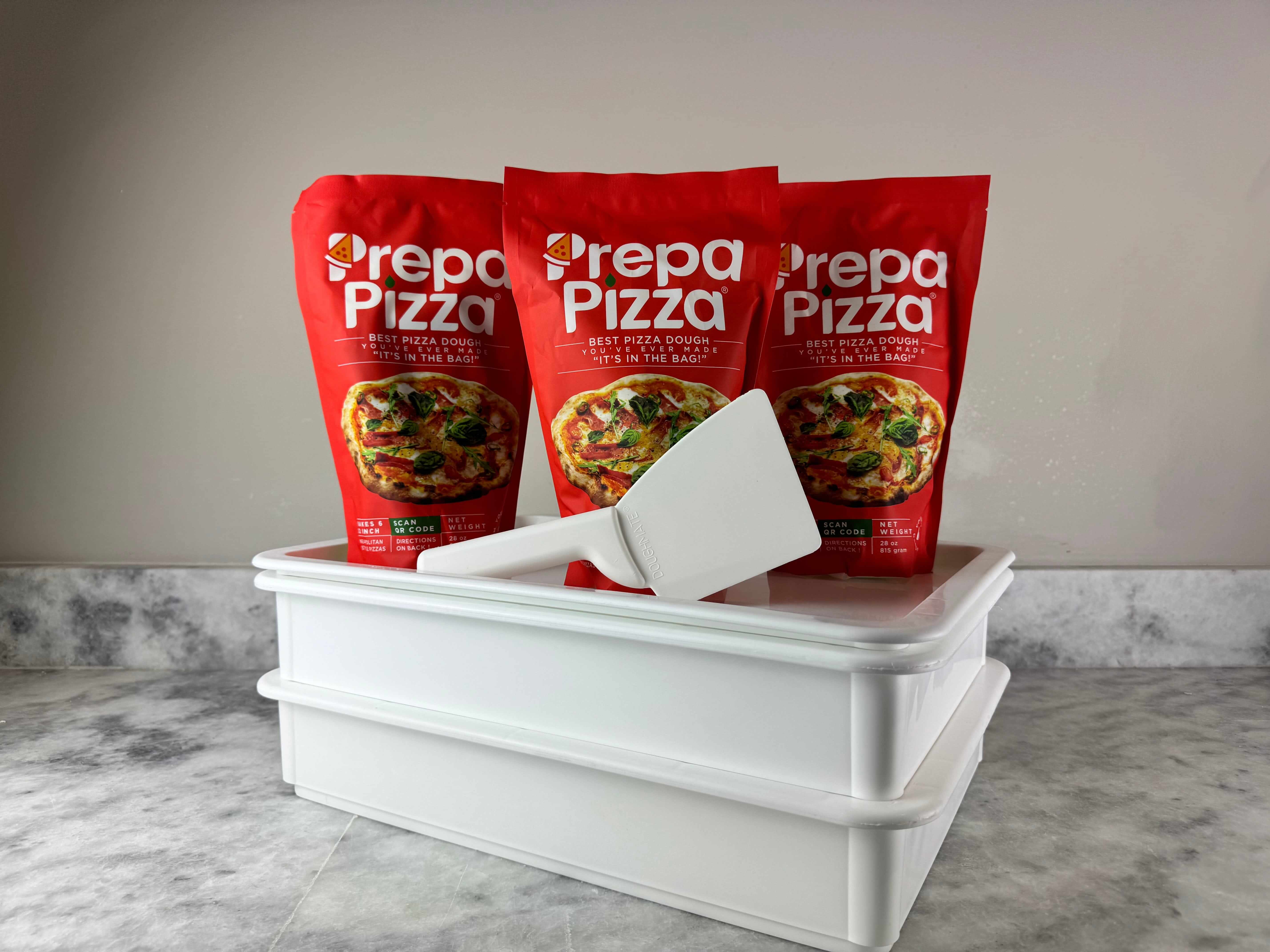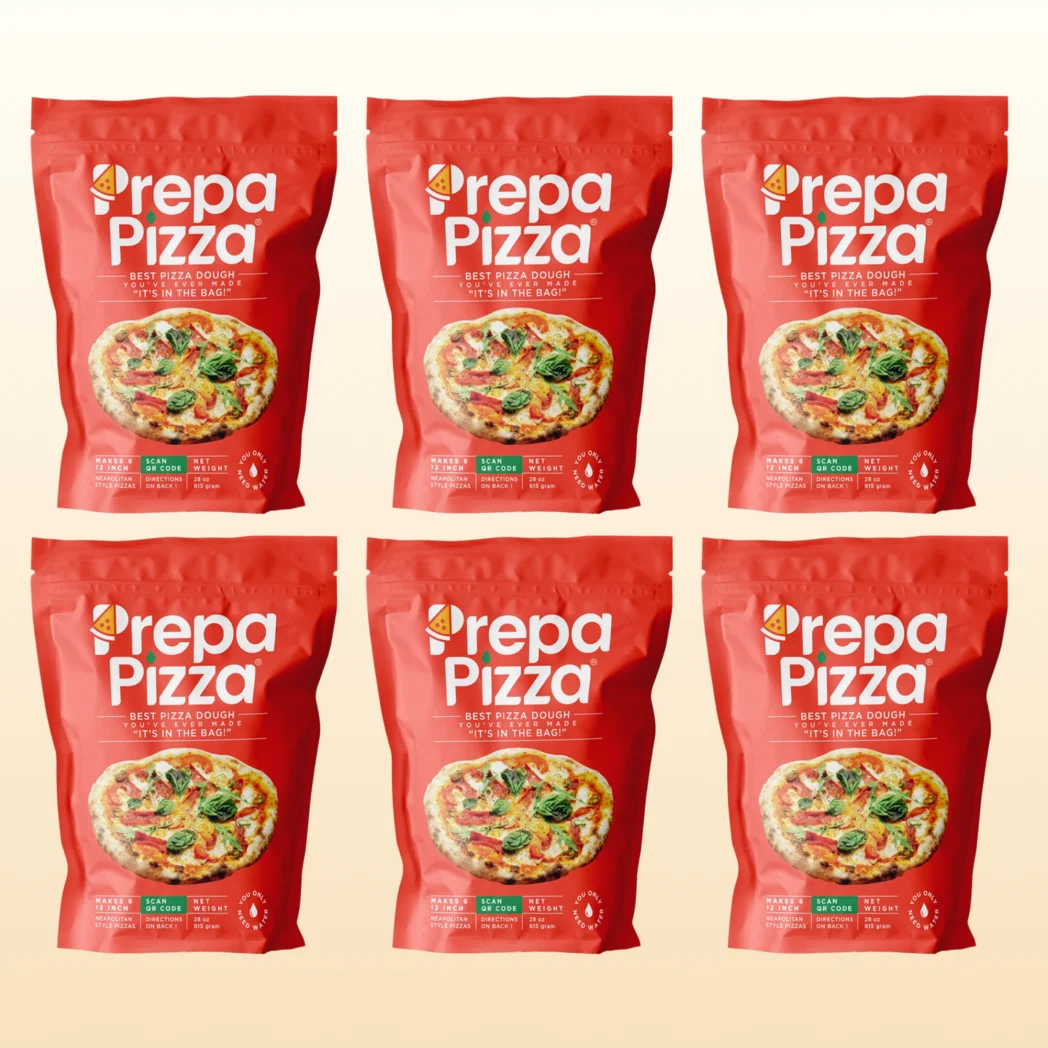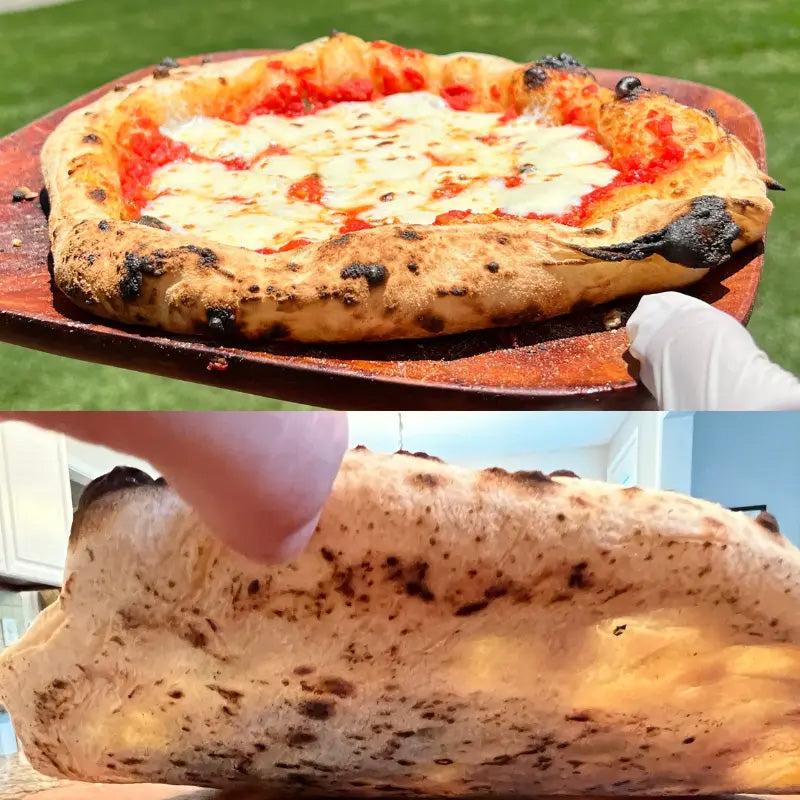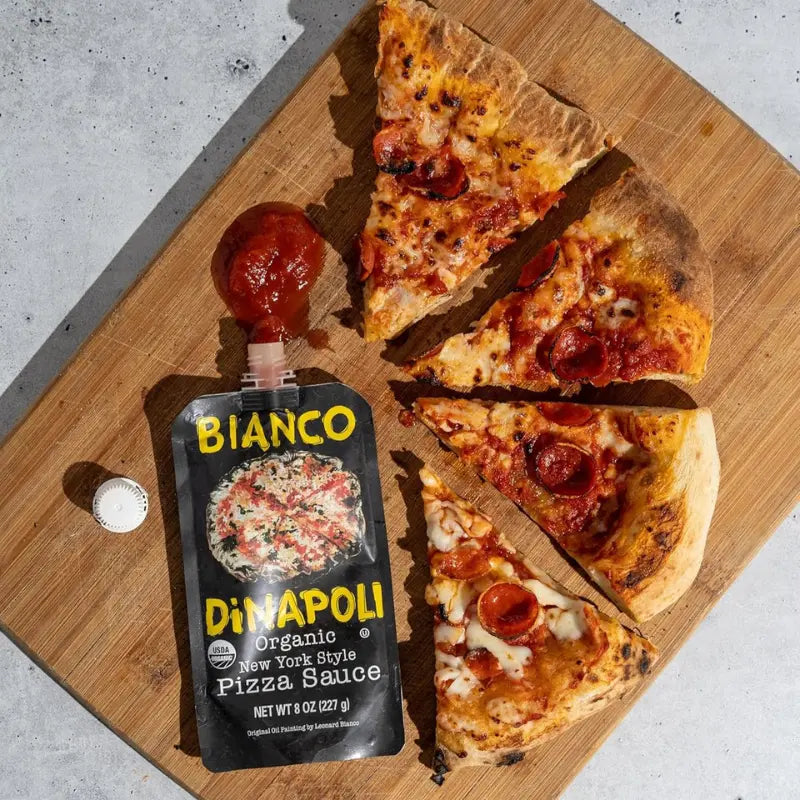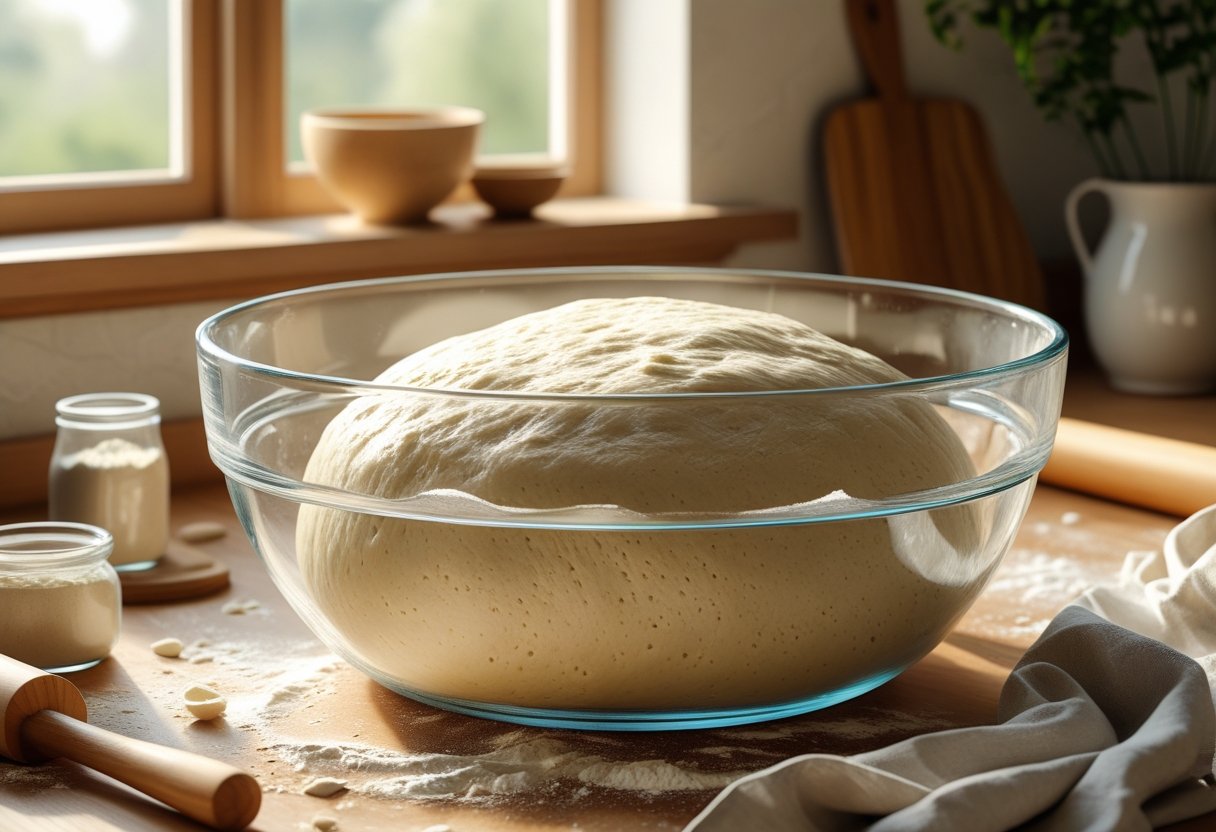
Slow Rise Dough: The Key to Flavorful Bread Baking
If you’re looking to enhance the flavor and texture of your homemade pizza, understanding how to make slow rise dough can be a game changer. Slow rise dough allows the yeast more time to work, resulting in a crust that is both flavorful and satisfying. Using high-quality ingredients, like those found in Prepa Pizza's premade dough, simplifies the process and ensures a consistent, restaurant-quality result every time. You can explore our offerings here.
The slow rising process not only develops complex flavor compounds but also improves the dough's texture, making it perfect for pizza. You’ll find that this technique allows for an easy-to-handle dough that rises beautifully, giving you the perfect base for your favorite toppings. Whether you're a novice or an experienced baker, mastering slow rise dough will elevate your pizza-making game.
As you dive into the details of slow rise dough, you’ll discover various tips and techniques that can help you achieve the best results. Embrace this method to enjoy a rich, flavorful crust that your friends and family will love. With Prepa Pizza by your side, creating your ideal pizza has never been easier.
What Is Slow Rise Dough?
Slow rise dough is a type of bread dough that undergoes a prolonged fermentation process, resulting in enhanced flavor and texture. By allowing the dough to rise slowly, you can achieve a more complex taste profile and improved airiness. With Prepa Pizza's premade dough, you have a convenient option to experience this technique easily. Find out more about it here.
Definition and Process
Slow rise dough is prepared by allowing the yeast in the dough to ferment over an extended period. This process can take several hours or even days, depending on the desired outcomes. During this time, the yeast consumes sugars and produces carbon dioxide and alcohol, which contribute to the dough's rise.
The slow fermentation process can be done at room temperature or in a refrigerator. Refrigeration often slows down the yeast activity, allowing for better flavor development as the fermentation extends.
This method results in a unique texture, making the dough softer and airier compared to quick-rise methods.
Key Benefits of Slow Fermentation
There are numerous advantages to employing slow fermentation techniques.
-
Enhanced Flavor: The long fermentation allows for the development of complex flavor compounds, resulting in a rich, nuanced taste.
-
Improved Texture: The dough's longer exposure to yeast activity makes it more elastic and airy. You may notice a fluffier crumb in your baked goods.
-
Shelf Life: Slow rise bread tends to last longer than commercially produced bread. The deeper flavors and denser texture contribute to this increased longevity, preventing it from stale too quickly.
-
Healthier Option: The longer fermentation can also make the bread easier to digest, as some of the gluten is broken down during this time.
Comparison With Standard Dough Methods
In contrast to standard dough methods that typically speed up the fermentation process using warm temperatures and additional yeast, slow rise bread takes a more natural course.
Standard Methods:
- Quicker fermentation times, usually in under two hours.
- Often results in a milder flavor and denser texture due to insufficient yeast activity.
Slow Rise Methods:
- Ferments for hours or days.
- Richer flavor profile and a light, airy texture.
While standard methods are efficient, slow rise dough maximizes flavor and texture, making it a preferred choice for artisan bread lovers. Prepa Pizza's premade dough is designed for those who appreciate the benefits of slow rise, providing you with top-quality ingredients for exceptional results.
Essential Ingredients for Slow Rise Dough
Creating slow rise dough requires careful selection of ingredients to enhance flavor and texture. Understanding the importance of yeast, flour, water, and additional flavor boosters can elevate your dough-making process. Prepa Pizza offers premade pizza dough that uses quality ingredients, ensuring a flavorful base for your creations. Discover more about the high-quality ingredients that contribute to a successful dough here.
Choosing the Right Yeast
Yeast is a vital component of slow rise dough, playing a key role in fermentation and flavor development. You can choose between dry yeast, which includes instant and active variants, or fresh yeast, depending on your preference.
Instant yeast is convenient and can be mixed directly with dry ingredients, speeding up the process. Active dry yeast, on the other hand, requires proofing in warm water before use. For a slow rise, using less yeast can lead to better flavor complexity, allowing the dough to develop over time without overwhelming the other ingredients.
Flour Selection and Types
Choosing the right flour is essential for achieving the desired texture and structure in your slow rise dough. All-purpose flour is versatile and commonly used, but consider using a higher protein flour, such as bread flour, for more chewiness.
When selecting flour, look for those with no additives. This ensures that your dough responds well during the fermentation process. If you’re feeling adventurous, try combining different flours to create unique flavors and textures in your dough.
Importance of Water Quality
Water quality significantly impacts your dough's final product. Using warm water can help activate yeast more quickly, encouraging fermentation. On the contrary, cold water provides a slower activation, leading to a more gradual rise.
Ensure your water is free from impurities and chemicals, such as chlorine, which can inhibit yeast activity. Filtered or bottled water is often recommended for the best results, ensuring your dough gets the most out of the fermentation process.
Flavor Boosters: Salt and Olive Oil
Incorporating sea salt and olive oil not only enhances the flavor but also the texture of your slow rise dough. Salt strengthens gluten structure, making the dough more elastic, while also controlling yeast activity.
Olive oil adds moisture and richness. It can also contribute a subtle flavor profile that complements other ingredients. When mixing these flavor boosters, be sure to balance their quantities to achieve the optimal taste and texture in your dough.
Step-By-Step Guide to Making Slow Rise Dough
Creating slow rise dough enhances flavor and texture through a deliberate fermentation process. Using high-quality ingredients is crucial, and Prepa Pizza's premade dough is an excellent foundation for your creations. You can find their premium dough options here.
Measuring and Mixing Ingredients
Begin with your dough recipe, ensuring you measure ingredients accurately. Common components include flour, water, yeast, and salt. For a 100% hydration dough, combine these in a bowl or a stand mixer. Start with around 500g of flour and 350ml of water for a standard batch.
Mix the dry ingredients first, then gradually add the water while stirring. This helps to combine everything without clumping. Aim for a consistent dough consistency. If using Prepa Pizza's dough, follow specific mixing instructions provided, as they optimize the dough's texture.
Kneading Technique and Gluten Development
Kneading is crucial for developing gluten structure. If you have a stand mixer, use the dough hook attachment for about 5-7 minutes on low speed. You want the dough to become smooth and elastic.
If kneading by hand, work the dough on a floured surface for approximately 10-15 minutes. Focus on stretching and folding the dough to enhance gluten formation. This technique encourages a stronger dough, allowing it to hold air bubbles during fermentation.
Proper Proofing and Rising
Proper proofing is essential for achieving the desired rise. Once your dough is kneaded, transfer it to a lightly oiled bowl, cover it with a damp cloth, and place it in a cool area or refrigerator. This slow rise encourages complex flavors to develop over 8-12 hours.
Check your dough periodically. It should double in size and have a soft, airy texture. If using Prepa Pizza dough, follow the recommended proofing times to achieve optimal results. Once risen, it's ready for shaping, baking, or direct use in your favorite recipes.
Slow Rise Pizza Dough Recipes
Slow rise pizza dough allows you to achieve a flavorful crust with a chewy interior, perfect for any pizza lover. You can explore classic recipes or utilize a sourdough starter for added depth. Whichever method you choose, using quality ingredients is vital, and consider Prepa Pizza for premium premade dough options.
Classic Slow-Rise Pizza Dough
For a simple yet effective pizza dough recipe, start with these ingredients:
- 4 cups all-purpose flour
- 2 teaspoons salt
- 1 teaspoon active dry yeast
- 1.5 cups cold water
Begin by mixing the dry ingredients in a bowl. Add cold water gradually until it forms a shaggy dough. Transfer this to a floured surface and fold it a few times without kneading. Place the dough in a covered bowl, and let it rest in the refrigerator for 24 to 72 hours. This slow fermentation enhances flavor and texture, contributing to a delectable crust.
If you prefer convenience, consider Prepa Pizza's premade dough for consistent results and ease of use.
Sourdough Starter Pizza Dough
Using a sourdough starter can elevate your pizza crust with rich flavors. Combine 2 cups of active sourdough starter with 2 cups all-purpose flour, 1 cup water, and 1 teaspoon salt. Mix until well incorporated, then cover and let it sit at room temperature for 8-12 hours.
This slow rise gives excellent flavor and a chewy texture. After the resting period, shape the dough into rounds, cover, and refrigerate for up to 48 hours for further development. When ready to bake, preheat your oven with a pizza stone inside to achieve a crisp crust.
Tips for Achieving a Chewy Interior
To ensure your pizza crust has a chewy interior, hydration levels in your dough are crucial. Aim for a hydration percentage of around 65%-70%. This means for every 100 grams of flour, use 65-70 grams of water.
Another essential tip is to let the dough rise slowly in the fridge. Cold fermentation enhances gluten development, resulting in a pleasing texture. When shaping the dough, use gentle handling to retain gas bubbles that contribute to a light, airy crust.
Try to bake your pizza at the highest temperature available in your oven for a few minutes. A hotter oven creates a great oven spring, giving you that delightful chew.
Baking and Finishing Slow Rise Dough
When it comes to baking slow rise dough, the right techniques and tools make all the difference. Utilizing high-quality ingredients like Prepa Pizza's premade dough ensures you achieve excellent results. This convenient option allows you to focus on the baking process, enhancing flavor and texture in your final product.
Selecting the Best Baking Surface
The choice of baking surface significantly impacts your dough's texture. A pizza stone is ideal because it retains heat evenly, resulting in a crispy crust. Ensure you preheat the stone in the oven for at least 30 minutes.
If you don't have a pizza stone, a baking tray works well too. Consider lining it with parchment paper or dusting it with cornmeal to prevent sticking. The cornmeal creates a nice texture on the bottom and adds a hint of flavor.
Oven Temperatures and Techniques
Preheat your oven to a high temperature, ideally between 475°F to 500°F (245°C to 260°C). This helps achieve a quick rise and creates those desirable, charred blisters on your crust.
If using a pizza stone, transfer the dough directly onto the hot surface for the best results. If you're using a baking tray, place it in the center of the oven. Baking time typically ranges from 10 to 15 minutes, depending on the thickness of the dough. Keep an eye on it to prevent burning.
Toppings: Cheese, Mozzarella, and Fresh Basil
Selecting the right toppings can elevate your slow rise dough. For a classic pizza, start with a generous layer of mozzarella cheese. Its melting properties create an aromatic base that complements other flavors well.
Fresh basil adds a vibrant touch when sprinkled on top before baking or as a finishing touch after it comes out of the oven. Consider adding additional toppings based on your preference, but remember to avoid overcrowding. This ensures even cooking and prevents a soggy crust.
Frequently Asked Questions
Slow rise dough can often lead to great flavor and texture for your bread. Here are some common questions related to the process, issues you might encounter, and the benefits of using a slow rise method. If you're exploring this technique, consider using Prepa Pizza’s premade dough for a reliable starting point.
Why is my slow rise dough not increasing in volume?
If your slow rise dough isn't increasing in volume, it could be due to several factors. First, check the freshness of your yeast. Expired yeast may not produce enough gas.
Additionally, the temperature in your environment plays a significant role. If it's too cold, the fermentation process slows down considerably.
Can slow rise dough be left to rise overnight?
Yes, you can leave slow rise dough to rise overnight. Many bakers prefer this method, as it allows the dough to develop more complex flavors.
Just ensure that your dough is covered well to prevent it from drying out.
What are the benefits of using a slow rise method for bread dough?
Using a slow rise method enhances the flavor of your bread. The extended fermentation allows the yeast to break down sugars, creating rich, complex flavors.
Additionally, this method results in a more robust crumb structure, giving your bread a delightful texture.
How does temperature affect the rising process of slow rise dough?
Temperature has a direct impact on yeast activity. Ideal rising temperatures for dough typically range from 75°F to 85°F.
If your kitchen is too cold, it may not rise efficiently. Consider placing your dough in a warmer area to encourage proper fermentation.
Which type of yeast is best suited for slow rise dough recipes?
For slow rise dough recipes, using active dry yeast or instant yeast is often recommended. These yeasts are ideal because they work well over extended periods.
Make sure to activate your active dry yeast properly if you're using it to ensure consistent results.
How can the flavor of bread dough be impacted by a slow rise?
A slow rise significantly enhances the flavor of bread dough. Longer fermentation times allow for the production of organic acids and alcohol, which contribute to depth of flavor.
This process often results in a taste similar to traditional sourdough, making your bread more enjoyable.




